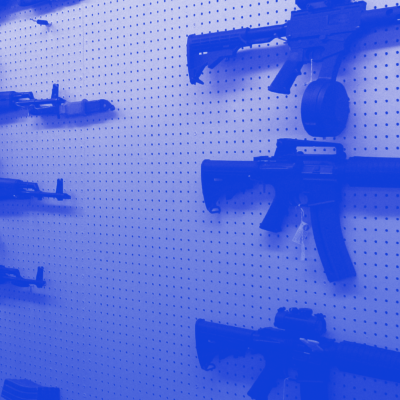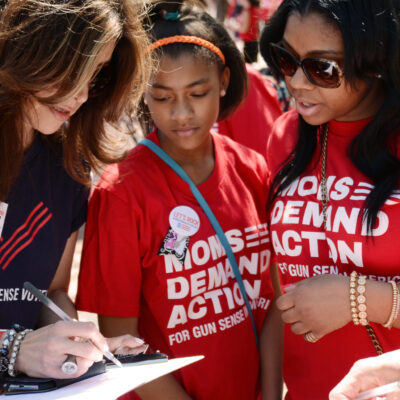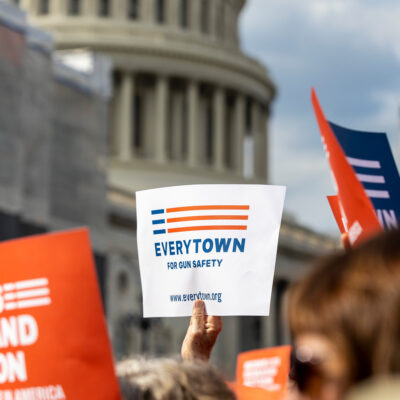Analysis from New Everytown Dashboard Suggests Murders in Big Cities Increased 33 Percent in the First Quarter of 2021, Underscoring Need for Federal Action
8.4.2021
Dashboard Compiles City-Level Murder and Gun Homicide Data Dating Back to 2015
Increase in City Gun Violence Reflects Collision of COVID-19 Crisis and Gun Violence – And Shows Need for Federal Action
NEW YORK — Everytown for Gun Safety, the country’s largest gun violence prevention organization, today unveiled new analysis of the current increase in violence in many cities, drawing primarily on FBI data to highlight key trends. The site includes an interactive platform for exploring city-level overall murder and gun homicide data in nearly 500 cities dating back to 2015. As our country strives to understand and take action on the drivers of these recent increases in violence, this tool is intended to help mayors and city policymakers, journalists, and advocates better understand their local impacts.
Key findings include:
- Early analysis of FBI and police department data reveals that in the first quarter of 2021, murders increased 33 percent in cities with at least 250,000 residents compared to the same period last year.
- 2020 was a deadly year for cities. In cities with at least 100,000 residents, the murder rate increased by 36 percent.
- In 2020, murder rates increased compared to 2019 in approximately 80% of cities with at least 100,000 residents.
- The six cities where the murder rate at least doubled in 2020 compared to 2019 were Lubbock, TX; Des Moines, IA; Fresno, CA; Vallejo, CA; Rockford, IL; and South Bend, IN.
“The wide range of cities seeing sharp increases in overall murders and gun homicide shows the urgent need for action,” said Sarah Burd-Sharps, director of research for Everytown for Gun Safety Support Fund. “The cities experiencing increases in violence have varying sizes and political compositions, and they’re located in all parts of the country. While a number of pundits have tried to blame this increase on police reform or on Democratic mayors, the data shows clearly this is a national problem, and it underscores the need for the Senate to stop blocking meaningful federal action.”
As part of this analysis, Everytown unveiled City Dashboard: Murder and Gun Homicide, an interactive platform letting users explore city-level FBI and police department data on overall murders and gun homicides in cities both large and small.
The platform and analysis come after Everytown’s release in May of groundbreaking gun trafficking analysis showing that three in four crime guns traced to an out-of-state seller were first sold in states with no background check laws. This analysis shows that without federal action, the current patchwork of state laws makes it easy for individuals to traffic firearms from states with weak gun laws into states with strong gun laws. In conjunction with that analysis, Everytown also created The Crime Gun Dashboard, an interactive platform letting users explore ATF data on crime guns going into and out of every state in the U.S.
There are no easy explanations for this year’s sudden jump in gun violence in our cities, and experts will need time to understand all of the social, economic, and cultural impacts of COVID on American life, health, and safety. Yet already we know that lack of access to income, suitable housing, and other critical life needs are key drivers of gun violence, and decades of policy decisions and underinvestment in Black and Latino communities have created areas of concentrated disadvantage, where public health crises — including both COVID and gun violence — thrive. Add to this the elimination and alteration of key social services and easy access to firearms, and we begin to see a number of compounding factors to explain the upward trend.
In December, Everytown laid out a roadmap for action to address gun violence in cities, detailing steps that state, local, and federal policymakers can take. Since then, the White House has repeatedly acted to address the issue from the top down, from combating deadly, untraceable ghost guns, to the Department of Justice’s development of a strategy on reducing violent crime and a new, annual comprehensive report on firearms trafficking, to the new comprehensive strategy to address gun violence that includes efforts to fight gun trafficking and historic investments in community violence intervention programs. The Biden administration has advocated for additional federal funding that would be dedicated to community violence intervention programs, including a new $5 billion grant program as part of the American Jobs Plan and over $200 million in the Fiscal Year 2022 budget.
Still, this report underscores the need for the Senate to pass gun safety legislation like a comprehensive background checks bill, the Break the Cycle of Violence Act, and more.




